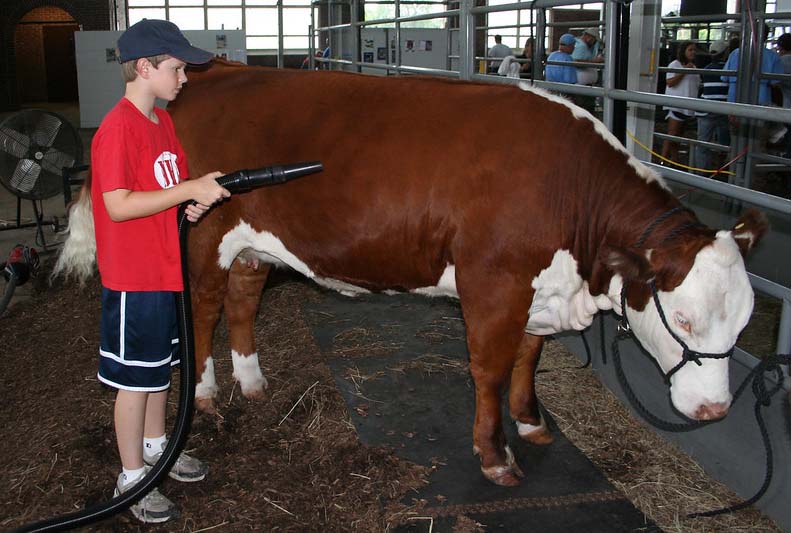
Fair season is coming and cattle need to be observed regularly for ringworm and warts.| Download this photo.
Cattle Chat: Fair season cattle health challenges
K-State beef cattle experts talk about how to recognize ringworm and warts, and how to keep those from spreading in show cattle.
May 31, 2022
By Lisa Moser, K-State Research and Extension news service
MANHATTAN, Kan. — Now that school is out for the summer, many rural teenagers can be found in the barn working with their livestock projects, and taking them to summer shows and county fairs.
When cattle are co-mingled at these events, they can pick up funguses and viruses that — when left untreated — can cause them to be denied a future health certificate, said veterinarians at the Kansas State University Beef Cattle Institute.
Speaking on a recent Cattle Chat podcast, veterinarians Brian Lubbers and Bob Larson talked about two of the common conditions that cattle bring home from these shows — ringworm and warts.
Ringworm
“Ringworm is a fungus that is passed through direct contact with an infected animal or via contact with contaminated brushes, halters and other equipment, or by cattle rubbing up against stalls where cattle with ringworm have been previously,” Lubbers said.
He said ringworm gets its name due to the circular patches of hair loss that result from the infection.
“Typically, ringworm is found on the head and neck in show animals, but those patches can develop anywhere on the body,” Lubbers said. “Often people will notice them when the patches are the size of a dime.”
Larson added that while the lesions are fairly easy to treat, it does take time for the hair to regrow and the animal won’t be admitted to the fair with lesions.
“Ringworm is slow growing, but it is also slow dying, meaning that it takes time for the patches to heal,” Larson said.
There are a few ways to treat ringworm, Larson said, so it is important to work with a veterinarian to come up with the best strategy.
Warts
The other common condition that cattle can bring home from the show is warts.
“Warts are caused by a virus that more often occurs in young animals,” Larson said. “And like ringworm, this is transmissible from one animal to another.”
Treatment for warts is to remove them when they are small and allow them time to heal before taking the animal to the next show, he said.
Proactive Management
With both conditions, the veterinarians stress the importance of early intervention and good biosecurity practices.
“Don’t wait until the week of the fair to observe the calf for these conditions,” Larson said.
Lubbers said: “Don’t share equipment at the fair, and if the animals do pick up ringworm or warts, make sure you isolate them from the rest of the show animals until they are healed.”
To hear this full discussion, go to the Cattle Chat podcast online.

